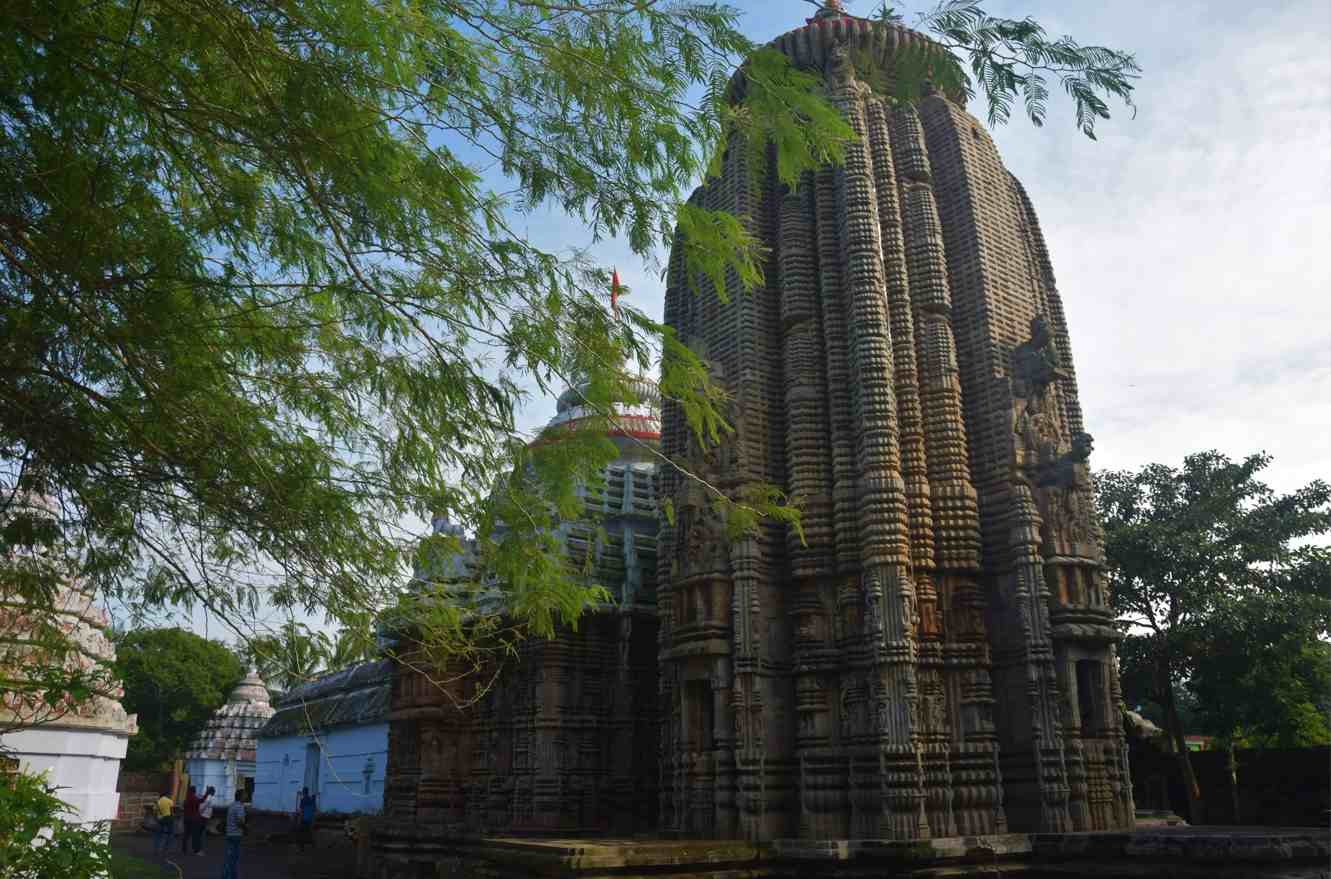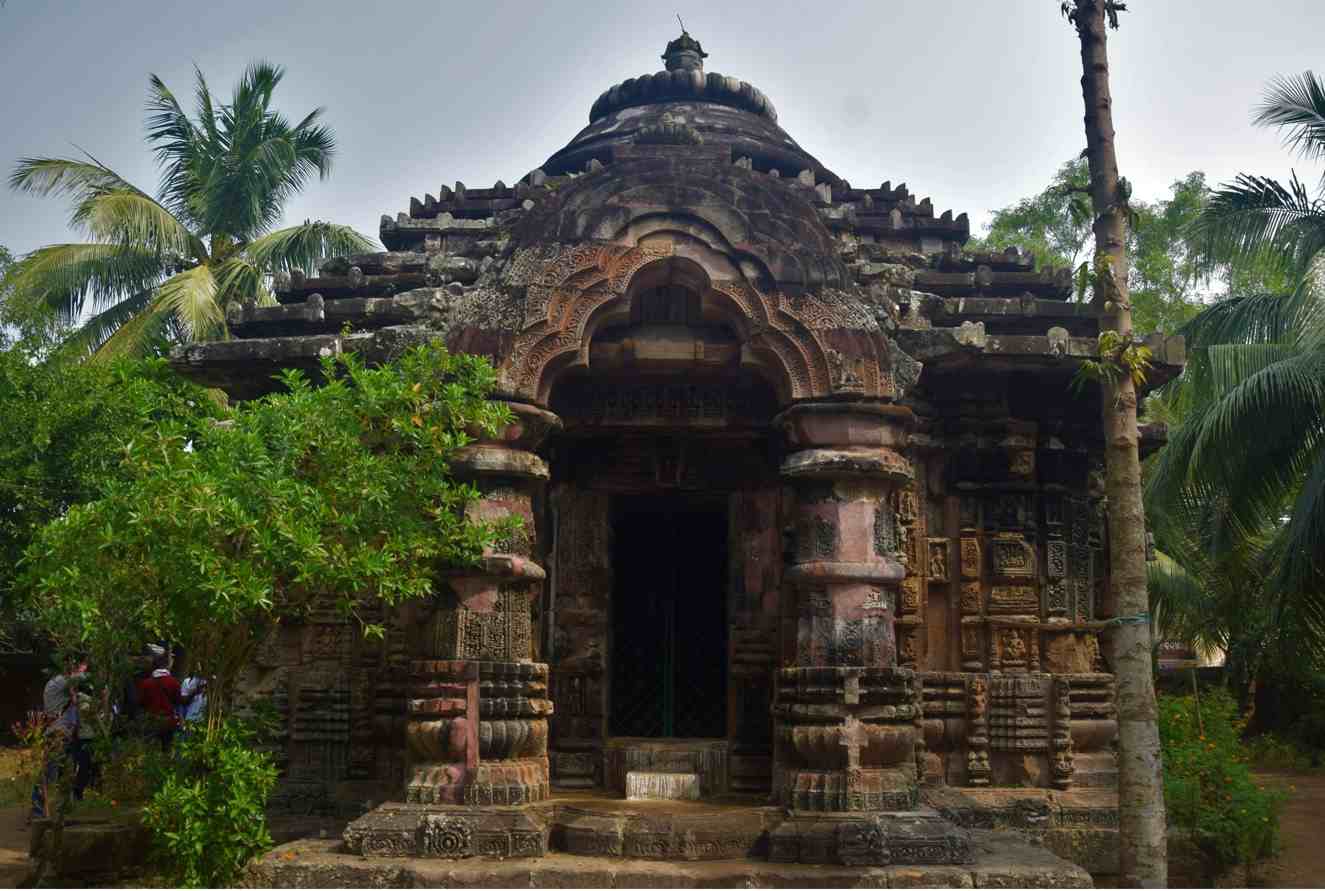Prachi river flowing in the Prachi valley near Bhubaneswar, the capital city of Odisha, is considered as the Saraswati of the East. The mystic Saraswati River in the Indus Valley has long been extinct, but Prachi is still flowing, although in limited condition. Prachi valley is known for its magnificent monuments built alongside the river banks of Prachi. It flourished between 7th & 16th century AD during which most of the monuments were originally built. Such monuments included brick temples, stone temples, mathas, stepped wells, tirthas, ghats, forts, ports, sand dunes etc. Prachi valley has witnessed the co-existence of various religious ideologies like Jainism, Buddhism, Shaivism, Shaktism & Baishnavism. Most of the monuments have been lost in time & the few that remain are the living testimony of the glorious civilization which once flourished in this circuit. Among such monuments, two of the around 150 monuments are under ASI while 15 are under State Archaeology. Dynasties linked with Prachi Valley includes Kharabela’s Chedi dynasty, Shailodbhabas, Bhaumakaras, Somabamsis, Eastern Gangas, Gajapatis, Mughals & Marathas. The magnum opus Geeta Gobinda was composed by Poet Jayadeba on the banks of the sacred Prachi River.

Prachi Valley is just within 15 km from Bhubaneswar touching the districts of Khordha, Cuttack & Puri at present with a total stretch of around 54km. It starts from a small village called Dakamba near the Naraj Barrage in Cuttack district & it ends up at Keutajanga after joining the Kadua river, 3km upstream from the Debi estuary in Puri district. It can be approached either from Bhubaneswar-Phul Nakhara-Adaspur side or from Bhubaneswar-Uttara-Balipatna side. Best way is to take the Phula Nakhara side route touching places like Niali, Chaurasi, Amareswar, Gop & Balipatna via NH16.
The first stop at the heritage sites under Prachi Valley is Sobhaneswar Temple at Niali under Cuttack district via Phula Nakhara on highway & taking a right turn on Adaspur-Niali State Highway 60 route. A huge concrete Nandi can be noticed as if greeting the visitors & pilgrims at outside the entrance. The 48ft high temple located on the left banks of Prachi River is a rekha vimana with pidha jagamohana of Kalingan order. The frontal pillar remnant shows that earlier there was natya mandap. The living temple was probably built by the Eastern Ganga dynasty King Anangabhima Deva III during the end of 12th century. The inscription on the walls of the temple in Odra-Magadhi mentions about the vassal Nagabansi King Baidyanath who might have taken care of the maintenance after the Gangas. The east-facing temple is made of sandstone & has a shibalinga within a circular jonipitha. Mahashibaratri is the major festival here. There is a small museum shed made housing rare Madhava & other idols recovered from Niali area. It’s around 23km from Phula Nakhara. There’s proper signage on the main road noticed leading to the temple which helps the travellers in tracking the sites with ease.

The next is the magnificent Madhabananda Temple situated in the Madhaba village under Niali block of Cuttack district. The 49ft high temple is a rekha vimana with pidha jagamohana & a flat- roofed natya mandap of Kalingan order. The east facing temple was built by the Eastern Gangas during the middle of 13th century. The living temple is made of sandstone. The presiding deity is a four-armed Madhava (a Vishnu cult) in black chlorite. The granite Garuda idol is a treat to the eyes. Janmastami, Dola Purnima & Ram Navami are the major festivals here. Temple food is available at the premises in the afternoon but on prior order booking. This temple is said to be the maternal uncle house of Lord Jagannath (Puri). It’s around 30km from Phul Nakhara & 7km from Sobhaneswar. There’s proper signage noticed on the road leading to the temple.

The curly & curvy narrow village street road leads to the Angeswar Mahadev Temple at Nua Pitapada in Cuttack district. The 14.25m high temple is a rekha bimana of Kalingan order. The east- facing temple was built by the Somabamsis during 10th century. The living temple is made of burnt brick which is rarely noticed in this part of India. The most astounding factor is that this brick temple has even survived the horrific super cyclone of 1999. The presiding deity is a patalphuta Shibalinga on a circular jonipitha. Mahashibaratri is the main festival here. There is a beautiful Bishwanath heritage temple nearby which can be visited if time permits. The temple is around 52km from Phula Nakhara & 18km from Madhabananda.

After crossing Cuttack district, one can now move towards Puri district. The first destination under Puri en route is the magnificent among the all temples under Prachi valley circuit – The Barahi Temple of Chaurasi village. The temple is located in a village with an unusual numerical name Chaurasi (literally meaning 84), on the right bank of Prachi River. The 15.84m high temple consists of a Khakhara bimana & a rectangular jagamohana. The east-facing temple was built by the Somabansis during the first quarter of 10th century. The living temple is made of sandstone. The presiding deity is a two-armed Maa Barahi with a fish in her right hand, hence named Matshya Barahi. Kindly note that all Khakhara temples looks unusual to Kalingan architectures & has debi as its main deity. The mostly intact temple is now maintained by ASI & stand on a lush green garden. It’s known for its beautiful scroll work & motifs especially of Lord Surya on the rear side. Dasahara & Rajja (in June) are the major local festivals here. It’s around 57km from Phula Nakhara & 7km from Angeswar. There is proper signage noticed on the road leading to the temple. The temple can be even approached from Amareswar chowk on Nimapara-Kakatpur side which is just 2km away. While moving towards the next temple stop, the nearly dried up Prachi River could be noticed below the bridge.

Under Puri district, the next destination is Gangeswari Temple at Bayalishbati village in Gop block. The 15.85m high temple consists of a Khakhara vimana & a pidha jagamohana of Kalingan order. The unusual south-west facing temple was built by the Eastern Gangas during the 13th century. The living temple is made of sandstone. The torana (facade) is a unique feature of this temple & the stunning Barahi as parswadebi is not to be missed here. The presiding deity is a four-armed Mahisasuramardini idol. The temple is said to b the prototype temple of Konark temple. Dasahara, Chaitra Gurubara, Shola Puja etc. are the major festivals here. It’s around 18 km from Barahi Temple. And, those travelling to Konark via Nimapara should never miss this lesser-known temple. There is proper signage on the road leading to the temple. The temple can be even approached from Amareswar chowk on Nimapara-Kakatpur side which is just 2km away.

From Nimapara, one need to take the road back to Khordha district for visiting the mega temple complex of Buddhanath Temple at Garedi Panchana village under Balipatna block. Buddhanath is around 27m from Gangeswari. Buddhanath Tempe is situated in the middle of scenic & rustic village settings at Garedi Panchana. The 21.85m height huge temple consists of a rekha bimana & a pidha jagamohan of Kalingan order. The east-facing temple was built by the Eastern Gangas during the first quarter of 13th century. The living temple is made of sandstone & the two platforms in the compound are of laterite. The architectural motifs are worth seeing personally among which Parbati & Kartika takes lead followed by the partly damaged Saptamatrikas stone preserved inside the temple’s jagamohana. Mahashibaratri & Bada Osha are the major festivals here. Maa Amrutalochani worshipped in an ancient temple inside the Buddhanath complex is the gramdebi of this village. There is one beautiful temple pond by the name Chandan Pokhari on the backside of the temple. The location is around 24km from Bhubaneswar via Uttara Square. There is proper signage noticed on the main road leading to the temple. While returning back to Bhubaneswar, one can stop at Balakati before Uttara Square to check the bell metal makings. This handicraft is quite famous & the artisans have been making beautiful brass metal utensils & temple bells here since ages which are supplied to various places in Odisha and outside.

The other sites which can be touched under Prachi Valley are Kuruma Buddhist site, Madhukeswar & Bodhikeswar temple at Deulidharpur, Kakatpur Mangala Temple, Jayadeba Pitha of Kenduli Village, Hirapur Chausathi Jogini Temple, Dadhibaman Temple, Deuli Village (near Adaspu) etc. Bhubaneswar is known as the Temple city of India. But very few know that there was once a flourishing civilization nearby with numerous heritage temples, virtually unknown outside its circuit. This blog is an attempt to bring back the glory of Prachi valley & turn it as a popular tourist circuit.
Note:- This article was previously published in India’s popular travel portal IndiTales on 22nd June 2020 as guest column titled “The Lesser Known Prachi Valley in Odisha: A Heritage Trail Less Explored” https://www.inditales.com/prachi-valley-odisha-heritage-trail/



The article is very well documented & informative. Personally visited the Buddhanath temple as mentioned in this Circuit.
Thanks for stopping by